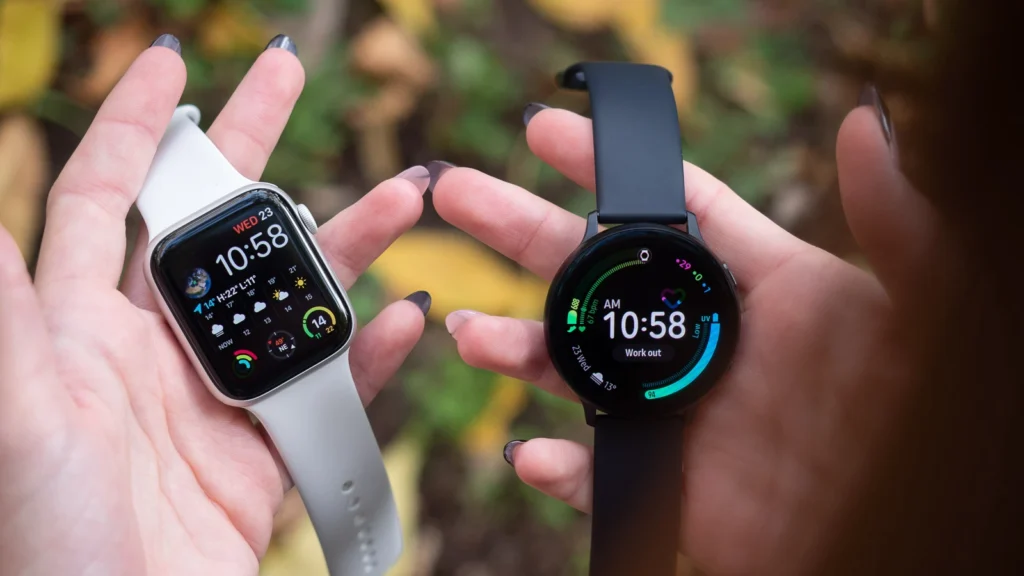In the era of smart technology, our gadgets have become indispensable companions, and the integration of the Global Positioning System (GPS) in smartwatches has revolutionized the way we navigate our world. From tracking workouts to guiding us through unfamiliar streets, GPS in smartwatches has opened up a realm of possibilities. In this article, we’ll explore the intricacies of how GPS works in your smartwatch, providing a deeper understanding of the technology that puts precise location data right at your wrist.
Understanding GPS Technology:
1. Satellite Communication:
At the heart of GPS functionality is a network of satellites orbiting the Earth. The smartwatch relies on signals transmitted by these satellites to triangulate your exact position. A minimum of four satellites is required for accurate location tracking, with each satellite sending signals that include the satellite’s location and the time the signal was transmitted.
2. Trilateration Process:
Trilateration is the method GPS uses to determine your location based on the signals received from multiple satellites. By calculating the distance between your smartwatch and each satellite, the device can pinpoint your location by intersecting these distances. The more satellites your smartwatch can connect with, the more accurate and precise your location data becomes.
GPS in Your Smartwatch:
3. GPS Receiver:
Your smartwatch is equipped with a GPS receiver, a specialized component responsible for capturing signals from the orbiting satellites. The receiver then processes these signals to determine your exact location. Modern smartwatches often include advanced GPS receivers that can connect quickly and maintain a stable connection for continuous tracking.
4. Integration with Other Sensors:
To enhance the accuracy of location data, smartwatches often integrate GPS with other sensors like accelerometers and gyroscopes. These sensors provide additional information about your movement, allowing the smartwatch to compensate for moments when GPS signals may be temporarily obstructed, such as when passing through tunnels or dense urban environments.

The Role of Software in GPS Functionality:
5. Map Data and Navigation Apps:
The magic of GPS isn’t complete without sophisticated software. Your smartwatch likely comes equipped with mapping data and navigation apps that interpret the GPS information, allowing you to visualize your position on a map. These apps can provide turn-by-turn directions, track your route, and offer real-time information about your surroundings.
6. Firmware Updates:
Manufacturers regularly release firmware updates to optimize GPS performance and address any bugs or glitches. Keeping your smartwatch’s firmware up-to-date ensures that you benefit from improvements in GPS accuracy and reliability.
Maximizing GPS Efficiency:
7. A-GPS (Assisted GPS):
Some smartwatches utilize Assisted GPS (A-GPS) technology to expedite the process of connecting to satellites. A-GPS relies on additional data, such as the location of nearby cell towers, to acquire a faster GPS fix. This is especially useful in scenarios where obtaining a quick and accurate location lock is crucial.
8. Conserving Battery Life:
GPS usage can be a drain on your smartwatch’s battery. To maximize battery life, use GPS sparingly and turn it off when not needed. Additionally, some smartwatches employ power-saving modes that reduce GPS accuracy but extend battery life, making them ideal for longer activities.
Real-World Applications:
9. Fitness Tracking:
Fitness enthusiasts leverage GPS in smartwatches to track their runs, hikes, and bike rides with precise distance and speed measurements. The data collected during these activities can be analyzed to improve performance over time.
10. Navigation and Location Sharing:
Whether you’re exploring a new city or simply trying to find a friend at a crowded event, GPS in your smartwatch provides real-time navigation and location-sharing capabilities, ensuring you reach your destination accurately and efficiently.
Conclusion:
In conclusion, the incorporation of GPS technology into smartwatches has elevated these devices beyond mere accessories, turning them into powerful tools for navigation, fitness tracking, and location-based services. Understanding how GPS works in your smartwatch not only enhances your appreciation for the technology but also empowers you to make the most of the features designed to simplify and enrich your daily experiences. As technology continues to advance, we can expect even more innovations in GPS functionality, further enhancing the capabilities of smartwatches in the years to come.
FAQ’s
Q1. What is GPS, and how does it work in a smartwatch?
GPS, or Global Positioning System, is a satellite-based navigation system that allows your smartwatch to determine its precise location on Earth. The smartwatch communicates with satellites to triangulate its position, providing accurate location data.
Q2. How many satellites does a smartwatch connect to for GPS functionality?
A smartwatch typically connects to a minimum of four satellites to ensure accurate location tracking through a process called trilateration. The more satellites it connects with, the more precise the location data becomes.
Q3. What is the role of the GPS receiver in a smartwatch?
The GPS receiver in a smartwatch captures signals from orbiting satellites and processes them to determine the device's exact location. Modern smartwatches often feature advanced GPS receivers for quick and stable connections.